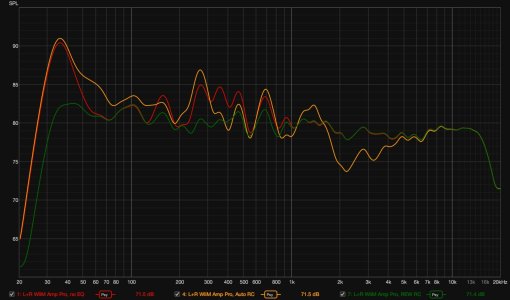Off we go again with personal niggles. Who'll show the greatness to stop here? It's Christmas.

Even a "bad" room correction result (either bad sounding or strange looking or both) can teach us something in the end. I do even recommend to start several RC runs in slightly different positions in the room to get a feel for how much some things change. This should also provide some inside into what can be expected from PEQ room correction and what we can't.
Many smartphone mics will show a very pronounced peak in the treble region, mostly somewhere between 7 and 11 kHz. If this shows up in all measurements, no matter in what position it was taken, it's an obvious evidence for the mic being at fault, not the room nor the speakers. This in turn should make very clear that there's no point in attempting full range automatic RC with this microphone.
At the other frequency extreme some phone gradually cut of frequencies below 60 Hz. Unfortunately, my brand new Xiaomi phone does it, my old one from 2 ½ years ago did not. When trying to run automatic RC covering a frequency range from lower than 60 Hz the result would be a massive bass boost (all because of the wrong measurement).
Trying to get anything useful out of manual PEQ without any measurements is very hard, as
@slartibartfast already pointed out. But no matter how one wants to make use of it, the only way is to first get a concept of
- how frequency relates to the pitch of a tone
- how Q determines the broadness or narrowness of a filter and
- how much or how little positive or negative gain is even perceivable at different frequencies.
And finally it's good to understand that positive gain needs additional power from the amplifier. Plus 10 dB of gain need ten times the amplifier power!


